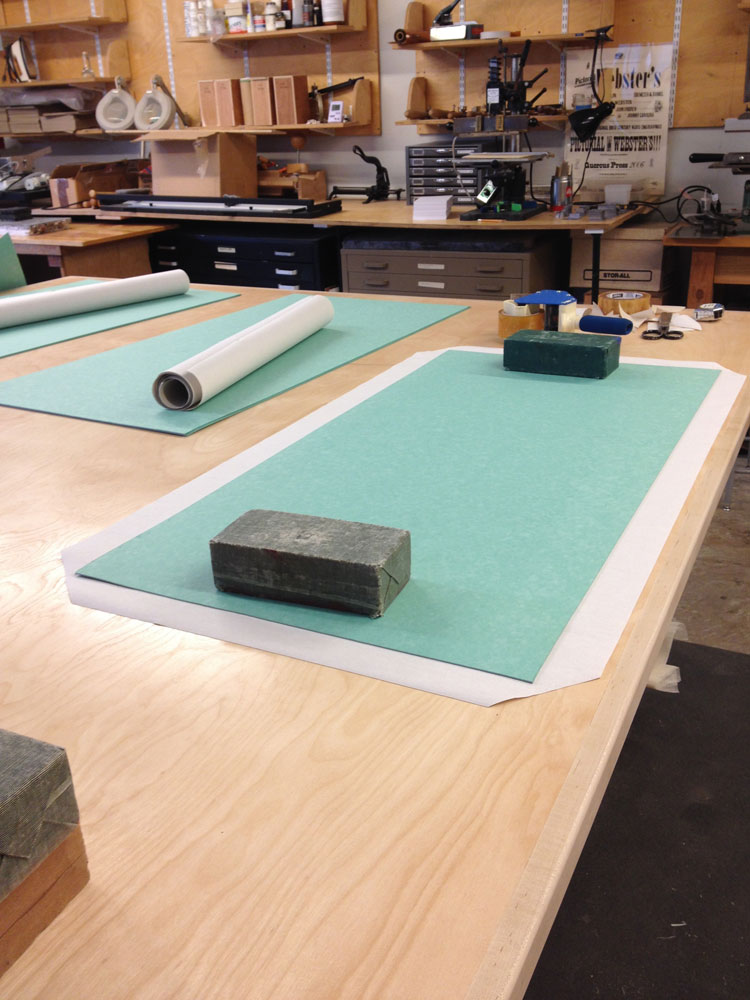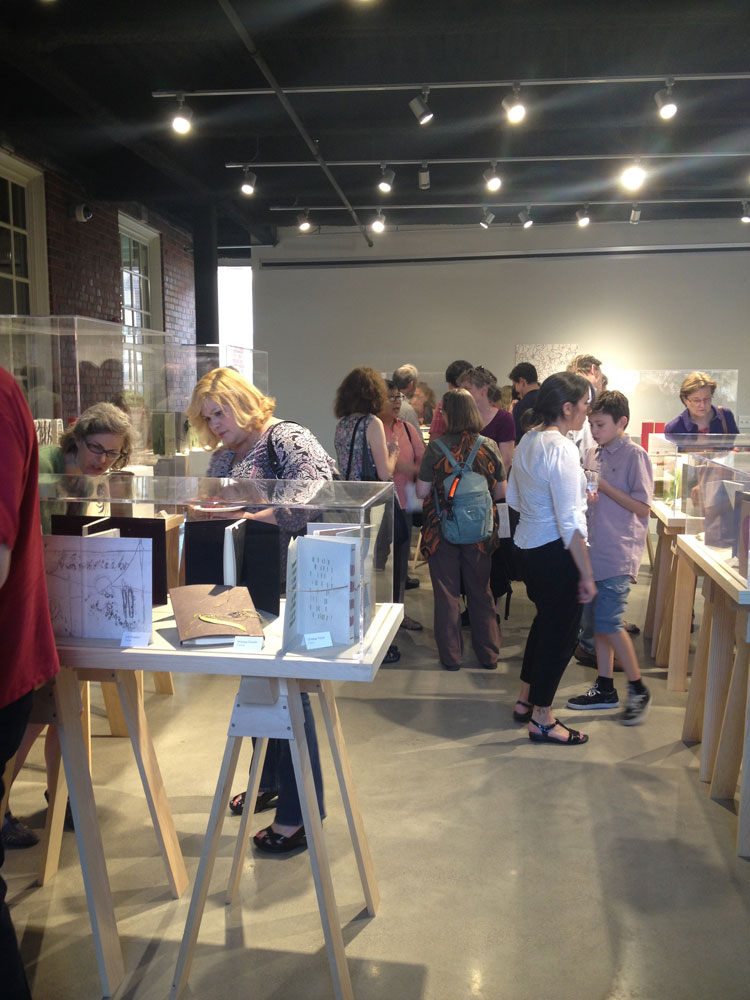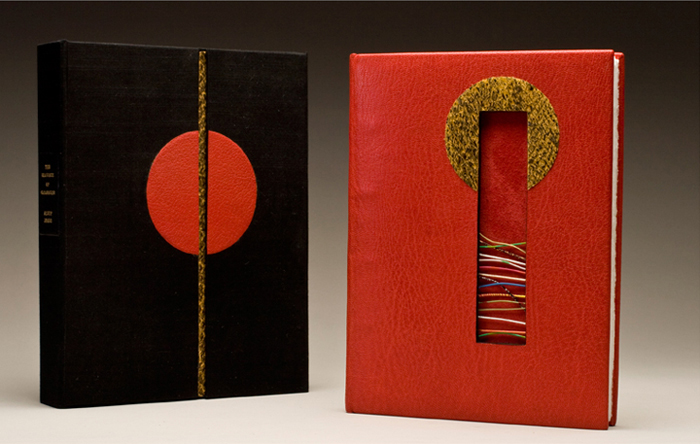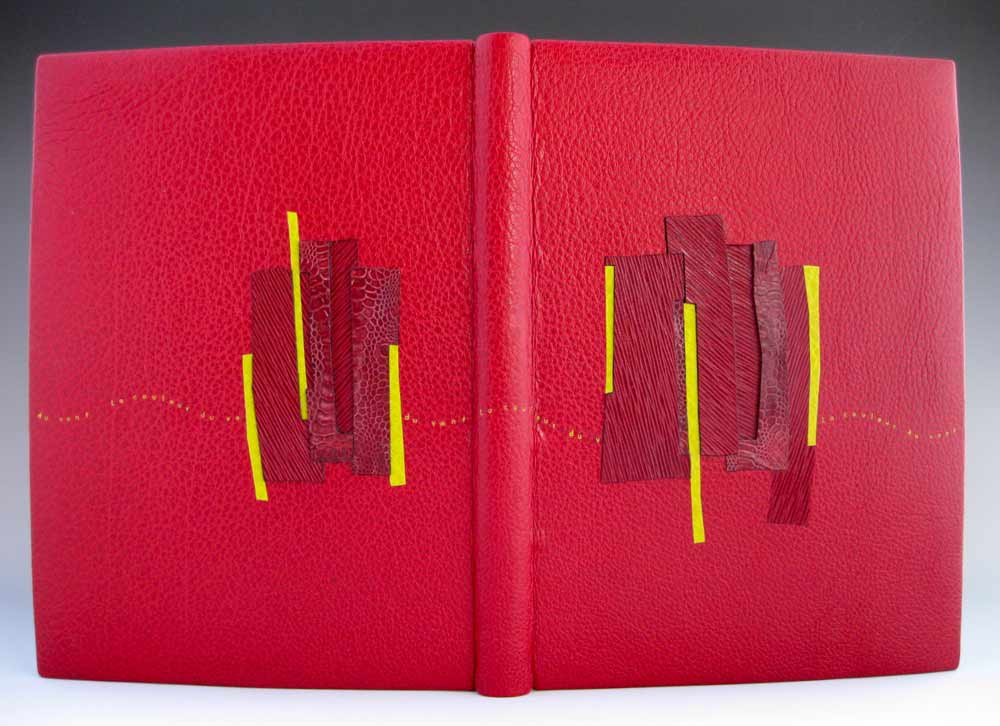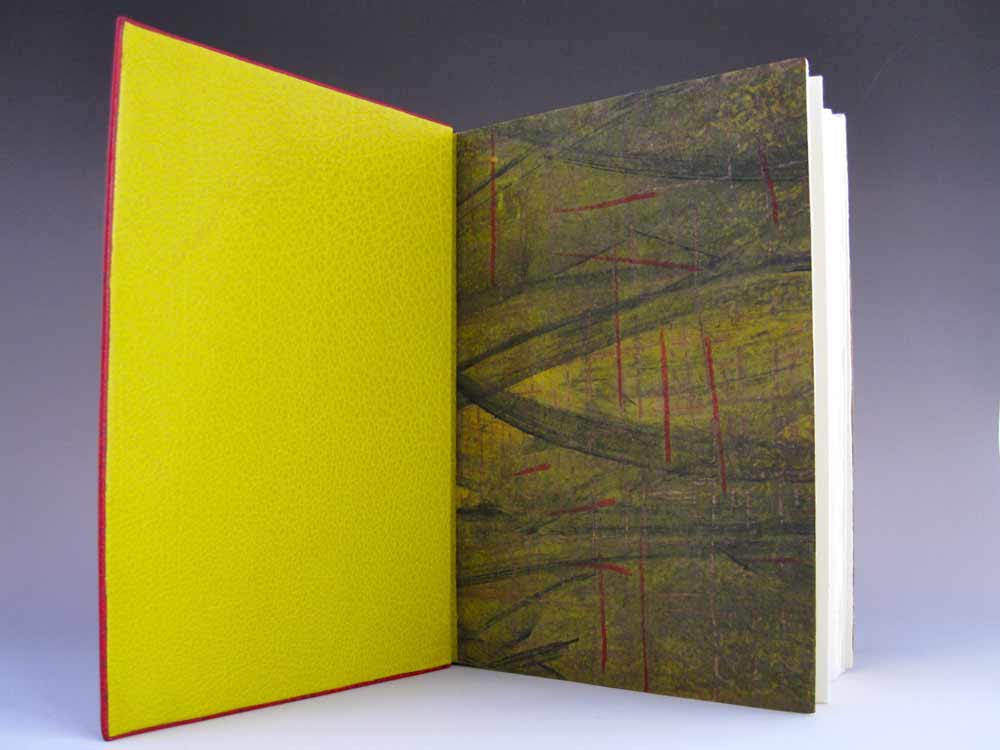Last week, North Bennet Street School opened their first bookbinding exhibit in the Windgate Gallery. During the set-up, along with Jeff Altepeter and Katie Barber, I had the pleasure in handling the design bindings for ARA-Canada‘s La Couleur du Vent exhibit. To start off, I unpacked all of the books, unraveling them from their protective layering while keeping everything organized.
Jeff and I then went to task in laying out the books in their respective spots, doing our best to arrange the cases in a complimentary fashion. The school recently built new wooden bases for the exhibit with sawhorse-style legs. In order to have an adequate base, we decided to hide the wood by making some custom wrapped boards in a suitable and subtle bookcloth. After the wooden bases were installed we put the bindings in their final place, making minor adjustments by adding risers and wedges for the books lying flat.
In addition to the bindings, a table was set up with a facsimile of the printed text. This gave real insight to the inspiration many of the binders saw within the illustrations, many of the graphics were replicated or abstracted on several of the bindings.
The night of the reception was attended by quite a crowd of binders coming from as far as France and Canada. Odile Douet of École Estienne in Paris was accompanied by Jonathan Tremblay, president of ARA-Canada (both with beautiful bindings in the show). Odile gave a heartwarming talk about the transformation of this simple idea and how it flourished into an international traveling exhibit. If you haven’t had a chance to view the exhibit, you can do so until it closes on September 14th.

